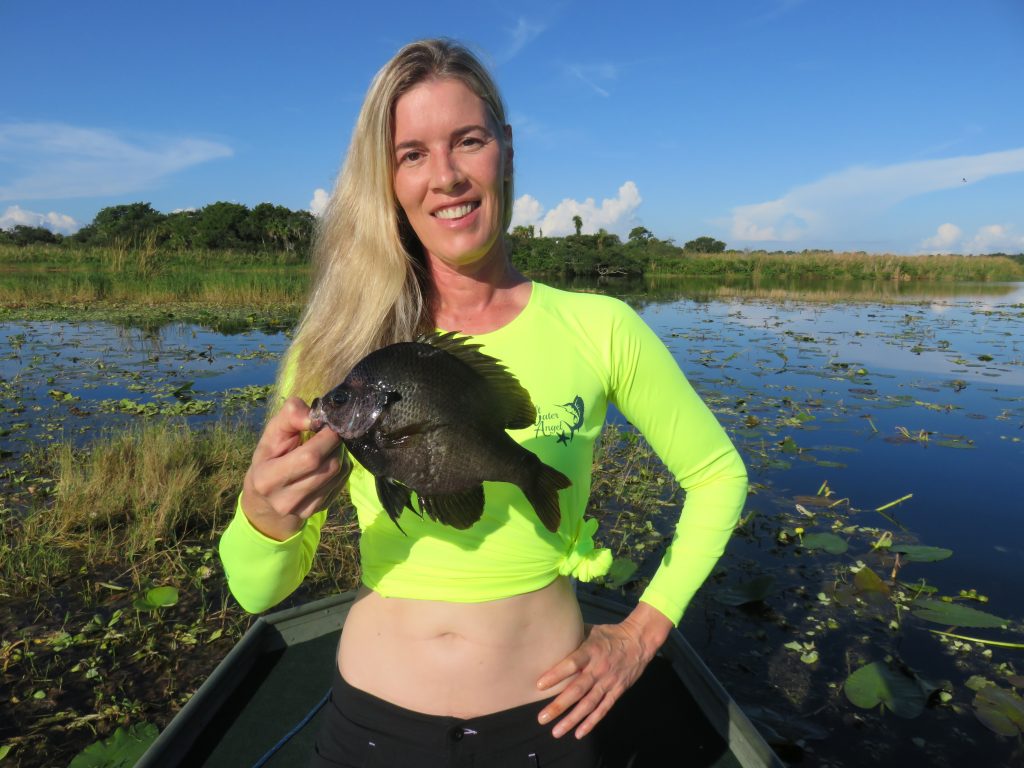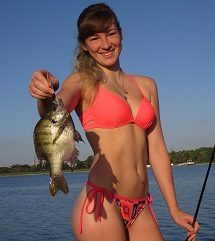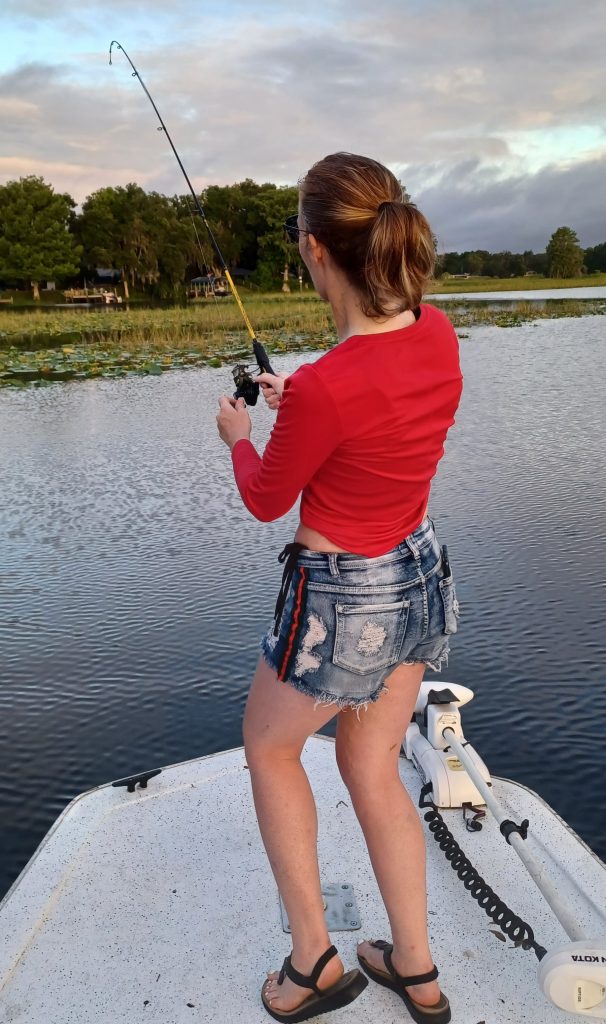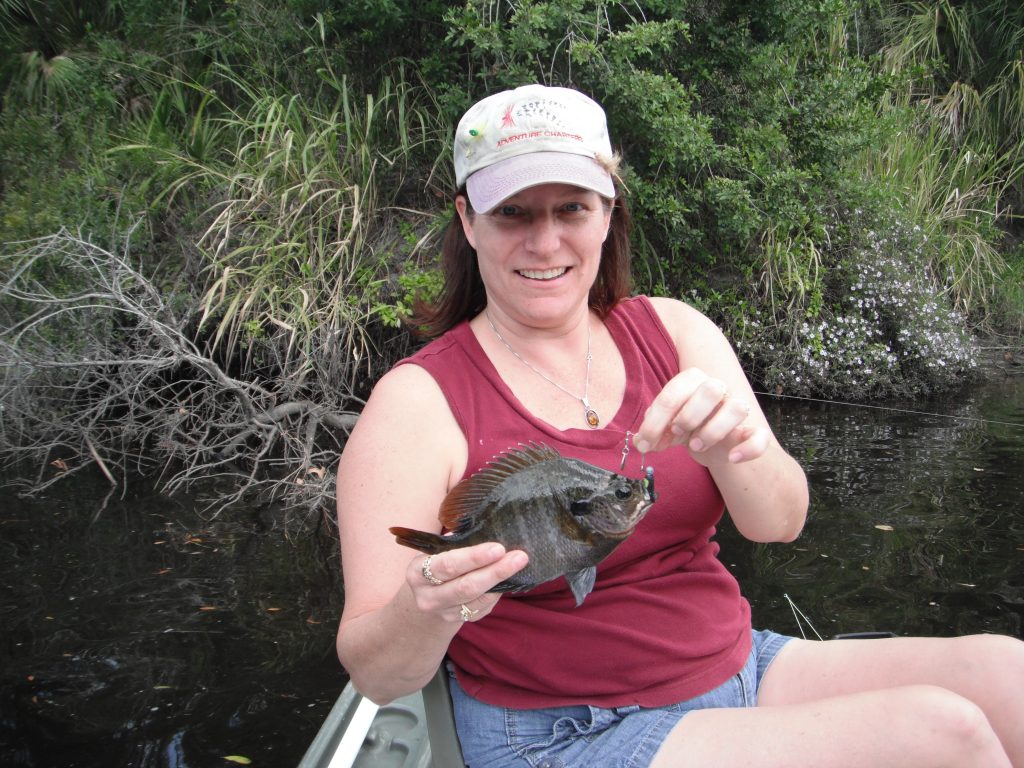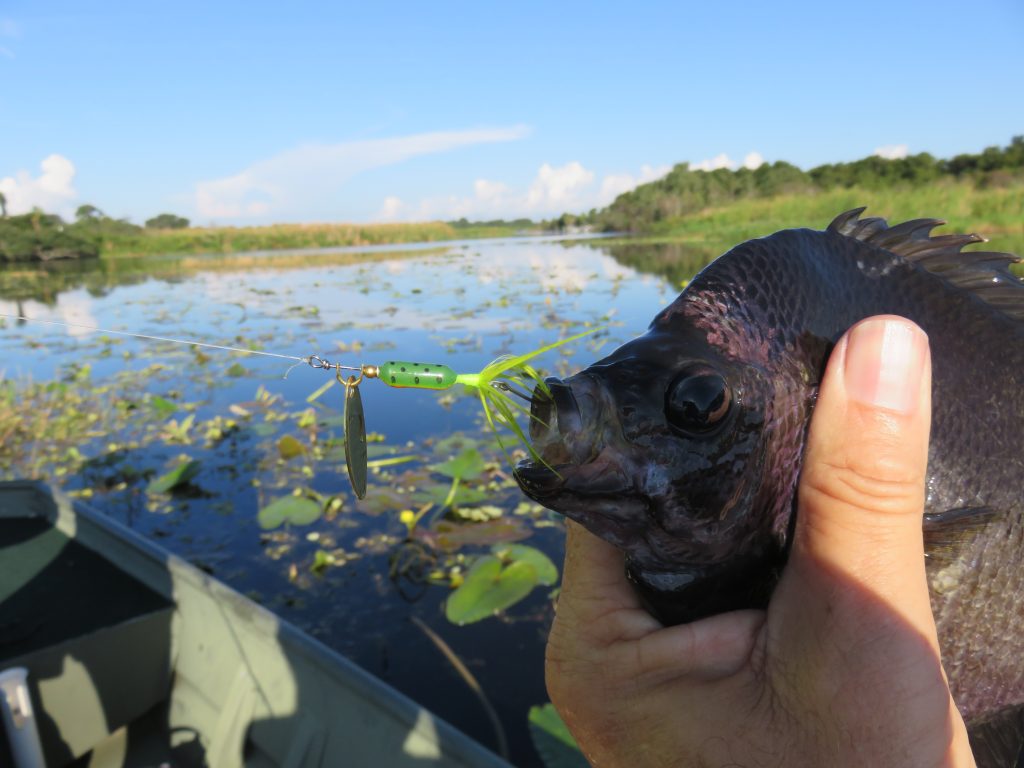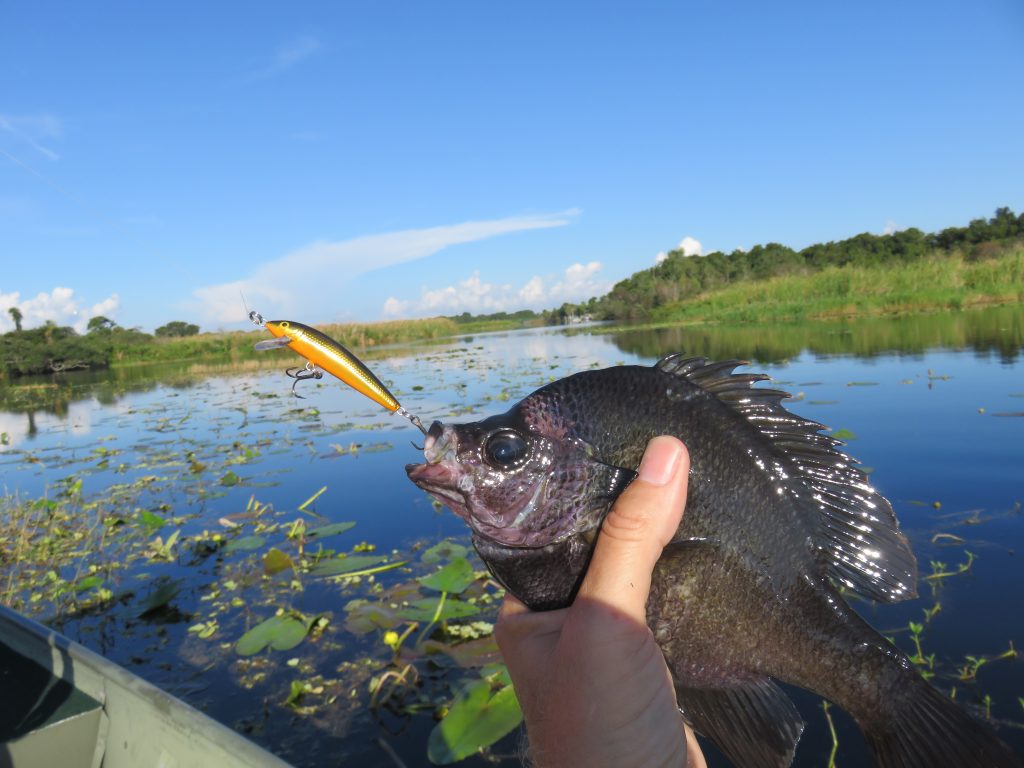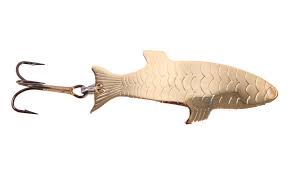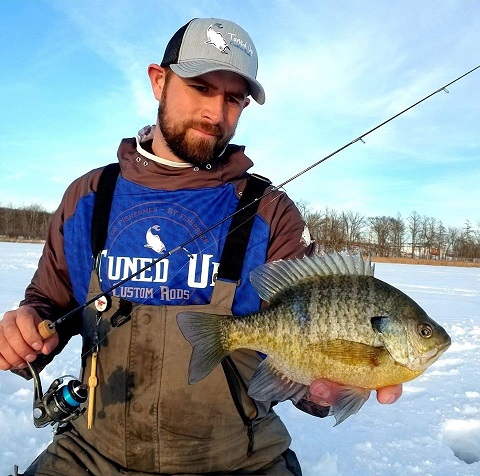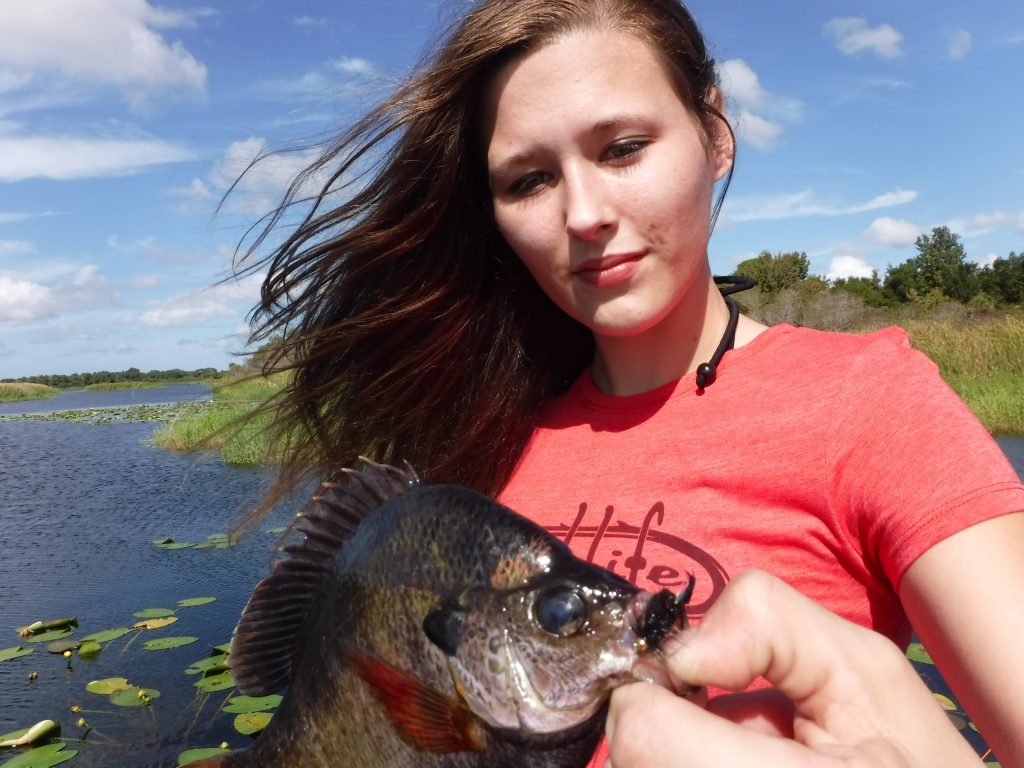7 Productive bluegill fishing lures
This article will list 7 productive bluegill fishing lures. Bluegill are often caught by anglers using live bait. However, bluegill are an aggressive species that readily take artificial lures. Anglers just need to scale down the offering to match the mouth of a bluegill. Most are diminutive versions of successful freshwater fishing lures.
My name is Capt Jim and I am a professional fishing guide in Florida. I enjoy saltwater fishing, but on my days off I can often be found enjoying some hard-fighting bluegill and other panfish. These are the 7 productive bluegill fishing lures that I use and have the most confidence in.
7 productive bluegill fishing lures
My 7 favorite bluegill fishing lures are; Mister Twister curly tail grub, Beetle spin spinnerbait, Rooster tail spinner, Rapala Floating Minnow, Acme Phoebe spoon, Blakemore Road Runner, and flies. These seven lures will catch bluegill in every application, even through the ice!
I always use an ultralight spinning outfit when casting lures for bluegill. The reel is usually spooled with 4 lb monofilament line. I like a longer rod, 6′ to 6 ½’ long. Spincast reels can be used, but have their limitations. When fly fishing, I like a 3wt outfit with a floating line.
Mister Twister curly tail grub
Mister Twister revolutionized the soft plastic fishing lure scene back in the late 70’s with the introduction of the curly tail line of baits. It is a very simple design, yet puts out an incredible amount of action with even the slightest movement. This lure is easy to use and is quite versatile; it can be cast, trolled, or fished vertically.
The 1 inch Teeny grub works very well for bluegill and other panfish on a 1/32 else or 1/16 ounce jig head. This combination is light, but is still heavy enough to cast a reasonable distance on ultralight tackle. The best technique is to cast it out near some type of structure such as a weed line or submerged tree, allow it to fall, then retrieve it back in at a slow steady pace. Many bites occur on the fall.
Click link to shop Amazon for this 6′ 6″ Lew’s ultralight combo at an affordable price!
“Fishing Lido Key is a participant in the Amazon Associates Program, an affiliate advertising program designed to provide a means for sites to earn advertising fees by advertising and linking to Amazon. As an Amazon Associate I earn from qualifying purchases. ”
While just about any color can produce, I really like chartreuse when it comes to bluegill fishing. When bluegill are running large and small bass are plentiful, I will bump up the size to a 1/8 ounce jig head and a 2 inch grub. This larger bait will weed out the smaller bluegill. 1 pound bass are great fun on this ultralight tackle.
Johnson Beetle spin spinnerbait
The Johnson Beetle spin is my go-to freshwater fishing lure. One of the main components when fishing with artificial lures is confidence, and I have the utmost confidence in this little bait. It looks plain and simple, but is extremely effective. It is also easy to use as the lure is simply cast out and retrieved back in as slowly as possible while keeping the blade rotating.
Spinner baits are relatively weedless, and the Beetle spin is no exception. This makes it an excellent choice around fallen trees, docks, and other structure. It will also work its way through vegetation pretty well, though will get caught up in heavy moss or hydraulic. It is also very effective when trolled along a weed line or a structure break as a way to locate schools of bluegill.
I prefer darker colors for the most part. Black with a yellow or white stripe is my top choice, followed by green with a black stripe. However, there are a wide variety of colors that anglers can use. Again, confidence in the bait is critical. The 1/16 ounce size is perfect for the majority of bluegill fishing, but anglers can bump up to the 1/8 ounce size if the fish are running large.
Rooster tail spinner
Inline spinners are a staple in the tackle box of most freshwater anglers. They consist of a straight wire with a hook at the end, a body in the middle, and a blade at the front. As the lure is retrieved in, the blade rotates putting out flash and vibration. The lure can be cast out and retrieved as well as trolled, but cannot be presented vertically.
There are many quality spinners on the market. However, my personal favorite is the Worden’s Original Rooster tail spinner. The thing that separates it from other spinners is the light weight. The 1/16 ounce version is perfect for bluegill fishing. It sink slowly in the blade will flash and vibrate even with the slowest retrieve. The tiny treble hook is razor-sharp and will result in a good hookup ratio.
These spinners come in a wide variety of color combinations. If I had to choose one, it would be a gold blade with a colorful body. However, as in many lures, location and presentation are probably more important. White with a silver blade is a good choice in very clear water and on bright sunny days.
Rapala Ultralight Floating Minnow
The Rapala Ultralight Floating Minnow is in the plug family of lures. It is a hard plastic bait that floats on the surface when cast out. There is a plastic lip in the front that will cause the lure to dive down a few feet and wobble erratically, mimicking a wounded bait fish. It is fished for bluegill much the same way as anglers would fish for largemouth bass, casting towards structure and working it back with a moderate, erratic retrieve. It can also be trolled a long a weed line.
The Floating Minnow will generally speaking catch fewer fish, the larger ones. It is a pretty good mouthful, even for a larger bluegill. However, this is one of the attractions of this lure for some anglers; it weeds out the smaller bluegill. It is also a terrific choice when smaller largemouth bass are prevalent. It is offered in a wide variety of colors, all of them will be productive at one time or another. It is best to use and more open water, as the treble hooks will hang up in heavier vegetation.
Acme Phoebe spoon
The Acme Phoebe spoon is an old-school fishing lure that has been around for a very long time. It is quite simple in design, but remains effective to this day. It is especially productive in slow-moving streams and rivers, for whatever reason. I definitely prefer gold and almost always use the 1/16 ounce size.
This compact lure is fairly dense and can be cast a long distance, making it an excellent choice for anglers who need to cover water. The bait should be retrieved and steadily with a short twitch and pause every couple turns of the real handle. As with many lures, a lot of the bites will occur on the fall.
The spoon is also extremely effective when fished in a vertical presentation. For the most part, this means summer and winter, and that includes anglers fishing through a hole in the ice. Bluegill will school up in deeper water during these seasons. This spoon dancing seductively just above them will often draw a strike. Anglers can also tip the spoon with a tiny piece of nightcrawler or wax worm as well.
Blakemore Road Runner
The Blakemore Road Runner is a very interesting and productive bluegill fishing lure. It is also a staple among anglers who troll and is my favorite crappie fishing lure. This lure combines a jig and a spinner in one compact little unit. The tail dances seductively while the blade puts out flash and vibration. It works especially well in the tannin stained waters, such as I fish here in Florida.
I definitely prefer bright colors went fishing the Road runner. Better yet, contrasting colors such as chartreuse and pink, white and pink, white and chartreuse work very well in the darker water. I mostly use the 1/8 ounce size as it will catch more crappie even though I may be targeting bluegill. It can be cast out and retrieved slowly and is also quite effective when trolled.
This lure is available in several versions. It can be purchased with a marabou dressing, which works very well and a variety of applications. However, I personally prefer the version were anglers can change the soft plastic tail easily. This lure combined with a 2 inch curly tail grub is extremely effective and will catch bluegill as well as a wide variety of other freshwater species.
Flies
Last on the list of my seven productive bluegill fishing lures is flies. Fly fishing is a hole different sport in some respects, as the line is used to cast the fly versus spin fishing where the weight of the lure is used to gain distance. Anglers just getting into the sport of fly fishing will find bluegill to be a great quarry to learn on as they are usually quite cooperative and long casts are not needed.
Just about any dark “buggy” looking fly will catch bluegill. The woolly bug are and woolly worm are top choices. In many instances, the bluegill will hit the fly as it sinks initially through the water column. If the take does not occur, the fly can be stripped in slowly. Tiny bait fish pattern will also catch plenty of bluegill as well as crappie and bass. Fly fishing for bluegill is one of my favorite past times!
In conclusion, this article on my seven productive bluegill fishing lures will help anglers choose the best lures and hopefully encourage them to give artificial baits a try when chasing these feisty, hard fighting, and tasty freshwater panfish!
